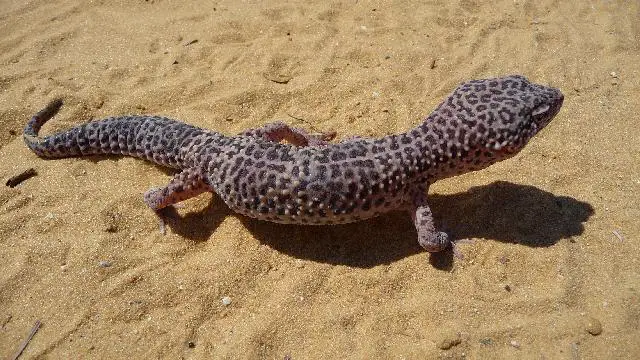Geckos are small and brightly colored lizards. People who are interested in keeping reptiles should consider geckos, such as leopard or crested geckos as pets. Many reasons make leopard geckos excellent pets for pet owners, including beginners.
Most often, people who want to keep reptiles as pets show interest in leopard geckos because they are easy to keep, docile, and require minimal care. Unlike say a dog or a cat, should you need to stay from home for a couple of days, a leopard gecko will be perfectly fine until you return.
While geckos are generally easy to look after, as with all living creatures, leopard geckos can undergo various health problems.
A common issue when shedding is that their toes can get stuck and will often be lost. However, unlike their tails which they can drop when threatened and regrow, if they lose their toes they will not regrow.
What causes geckos to lose their toes?
Bad shedding is the most common reason why geckos lose their toes. Primarily, due to poor shedding and habitat in captivity, the skin around the toes of the animal does not shed properly, which leads to dryness. The poor blood supply to the toes can cause the death of cells and tissues. As a result, your gecko can lose its toes.
What to do if your leopard gecko has dry skin.
Because geckos require optimal temperature and humidity levels, they can’t survive in high temperatures and humidity. However, an optimal temperature that ranges between 24 and 30 degrees Celsius is necessary for proper shedding.
Research highlights that geckos’ toes need the warm water container to loosen their skin. However, due to poor the poor ability of the animal to bite its toes’ skin for peeling purposes, the gecko can’t remove the skin properly.
How to avoid geckos losing their toes?
Although most people think that keeping geckos require minimal care, the problem occurs when you don’t provide them a favorable environment where they can shed properly. So, first, you have to take care of the habitat requirements for your pet, which requires you to place your gecko in a large bowl or container.
Don’t forget to put some warm water and mineral oil in the container. Because mineral oil is thinner in structure than water, it comes easier for the gecko to interact with it and start the process of shedding its skin. Remember, mineral oil is a lubricant, which enables the gecko to peel off its skin.
At the same time, you must learn about when and how a leopard gecko undergoes the shedding process. Usually, it is between 4 and 8 weeks. So, when you see the signs of shedding, you have to provide your pet with enough mineral oil and warm water to ease the process. Keep in mind the process usually lasts for 24 to 48 hours.
Conclusion
Wrapping up, a leopard gecko is a great pet for people of all ages who are interested in reptiles. Although issues during shedding can happen, to help your leopard gecko to shed its skin properly and not lose its toes, you can keep a humid container and maintain optimal temperature. If you notice that your reptile is having issues during shedding you can help with warm water and mineral oil.




